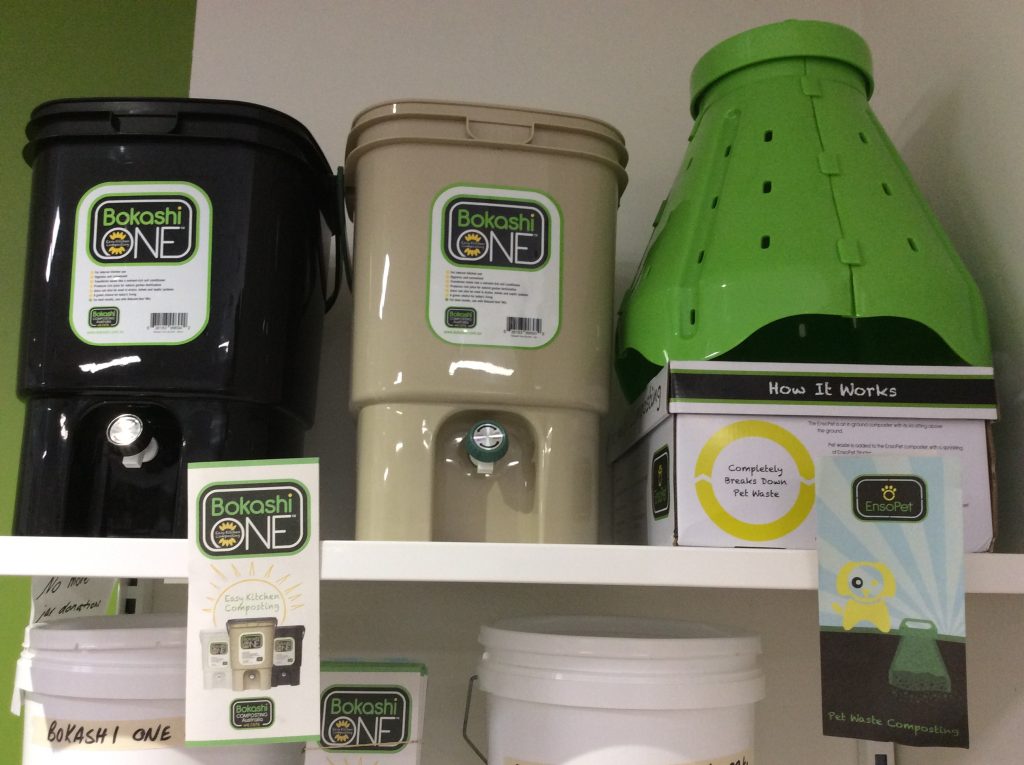
Belinda has been using the Bokashi system for years so we asked her to give us the low down as we now stock Bokashi buckets, Bokashi bran (loose), Ensopet systems and Ensopet bran (loose) on our zero waste store online.
SUMMARY
Bokashi may be called a “composting system” but it doesn’t actually work like a compost heap. Bran or liquid infused with microbes are added to the organic matter. They then work in an anaerobic environment to ferment the material. This means it does not break down in the bucket. But it will discolour and soften and take on a pickled smell. As well the liquid drained off can be diluted. It can used as soil conditioner.
For this reason the fermented material is buried in the garden where it continues to rapidly break down into the soil. Any type of organic matter can be added to a bokashi bucket (chop up large items before adding them in). This includes many things that can’t be added to regular compost. For example, citrus, onions, meat, fish, bones, eggs and cheese. In addition, you can even add the dust from sweeping and vacuuming and hair.
The material in the bucket should grow white mold and take on a pickled smell, which is not necessarily pleasant but shouldn’t be offensive. Additionally, if the bucket smells rotten or blue/green mold is growing, bury the contents, rinse the bucket out and start again. Importantly, the bucket should only be rinsed out with plain water, as cleaning products can disturb the microbial environment developing inside the bucket.
It’s ideal to have a two bucket system purchased via our zero waste store online. So when one bucket is full, you can leave it to ferment for about 2 weeks before burying it in the garden, meanwhile you can fill up the other bucket.
DIRECTIONS
Directions –
1. Make sure the drainage tap is closed and the drain grille is in place to start with.
2. Add any organic matter to the bin – you can add citrus, onions, meat, fish, eggs, cheese, dust from sweeping or vacuuming – anything that was once alive. It’s best to chop up large pieces. Large bones won’t break down properly at all. Make sure the lid is sealed tightly after adding material – bokashi microbes work in an anaerobic environment.
3. Once an inch or two of matter is in the bucket, squish it down with the tool and add a thin layer of bokashi bran.
4. Continue layering organic matter and bokashi bran until the bucket is full. Drain the bucket every few days – this liquid can be diluted with water and used as plant food, or just poured down the sink.
5. Once the bucket is full it will need to sit for about two weeks. Having a system of two buckets – so you can fill one while the other “cooks” is a good idea.
6. Bury the contents in a hole in the garden. You will notice that things in the bucket are still recognisable, but they may have gone soft or discoloured – this is because bokashi works by fermenting the material instead of rotting it. The material will continue to quickly break down in the soil.
7. Rinse the bucket with plain water and start again.
Keen to try something similar with your pet waste? Check out the Ensopet system
